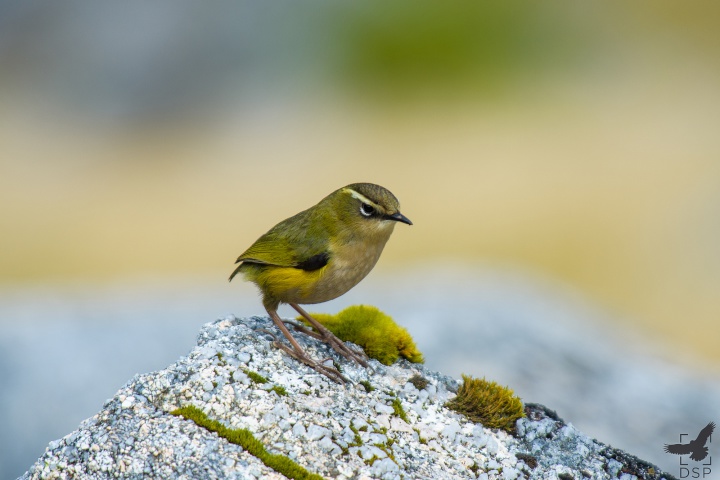Predator control puts rock wren on the rise
15 December 2017
Predator control puts rock wren on the rise

The reclusive
rock wren/tuke is on the rise in Kahurangi National Park due
to the Department of Conservation’s predator control
programme, recent monitoring confirms.
DOC field staff studying the effects of aerial 1080 operations in Kahurangi this summer have seen the numbers of this tiny alpine bird increase at all monitoring sites.
This comes as DOC winds up its Battle for our Birds large-scale aerial predator control programme for the year with 23 successful 1080 operations over about 440,000 hectares of conservation land as well as 98,000 hectares of ongoing trapping and other ground control work.
DOC scientist Dr Graeme Elliott says the results are very positive for rock wren in predator control areas.
“We’ve just started monitoring for this breeding season but already we’ve seen that rock wren numbers have increased in areas where we used aerial 1080 to suppress rats and stoats to low levels. This is good news for this critically endangered bird.”
“At one site in the Grange Range we’ve seen adult birds increase by more than 300% the last three years.”
“In the area with no predator control, rock wren numbers declined by 90%, until last year when we used aerial 1080 to avoid losing that population.”
DOC’s research has shown similar results for other at-risk species such as kiwi, kea, mohua/yellowhead, bats and native frogs, which is evidence that the targeted predator control programme is working, says Graeme Elliott.
DOC’s Battle for our Birds programme aims to suppress predators such as rats, stoats and possums over large areas of conservation land to protect our most at-risk populations of native birds, bats, lizards, frogs, snails and plants.
The 2017/18 programme will cover about 750,000 hectares when completed next July.
Similar sized programmes were also undertaken in 2014/15 and 2016/17 over about 600,000 hectares and 800,000 hectares, respectively. In each of these years, and this year, there was widespread forest seeding, which caused rodent numbers to increase, risking a stoat plague.
DOC currently undertakes regular pest control over an estimated 23% of forested conservation land.
DOC is developing a new multi-year programme, looking to sustain large-scale control of predators into the future to protect as many high priority forests and populations of vulnerable native species as possible.
This will contribute towards the Predator Free 2050 vision by ensuring our most threatened species and priority habitats are in good health.
–Ends–
Contacts
DOC media advisor Fiona Oliphant, ph 027 470 1378
Background information
Rock wren live in the South Island alpine environment and were this year split into two sub-species—northern and southern rock wren. The rarer northern rock wren, found in Kahurangi National Park, has the highest threat classification of ‘nationally critical’.
DOC has monitored rock wren in Kahurangi since 2014 to see how this species responds to aerial predator control. Over this time, 58% of monitored rock wren nests produced young after aerial 1080 and 45% the following breeding season. In areas without predator control just 13% of nests were successful. The results show that rock wren raise up to five times as many chicks after 1080 treatment compared to areas with no predator control.
Parts of Kahurangi National Park were treated with aerial 1080 in 2014, 2016 and 2017 in response to rising rodent numbers in those areas.
DOC will publish the results of its rock wren study once data collection is finished next year.
For more information see:
www.doc.govt.nz/battleforourbirds
ends


 Gordon Campbell: On bird flu, AUKUS entry fees and Cindy Lee
Gordon Campbell: On bird flu, AUKUS entry fees and Cindy Lee Susan Botting - Local Democracy Reporter: Ruawai Leader Slams Kaipara Council In Battle Over $400k Property
Susan Botting - Local Democracy Reporter: Ruawai Leader Slams Kaipara Council In Battle Over $400k Property Te Pati Maori: Another ‘Stolen Generation’ Enabled By Court Ruling On Waitangi Tribunal Summons
Te Pati Maori: Another ‘Stolen Generation’ Enabled By Court Ruling On Waitangi Tribunal Summons Peace Action Wellington: Die In for Palestine Marks ANZAC day
Peace Action Wellington: Die In for Palestine Marks ANZAC day Labour Party: Penny Drops – But What About Seymour And Peters?
Labour Party: Penny Drops – But What About Seymour And Peters? Government: PM Announces Changes To Portfolios
Government: PM Announces Changes To Portfolios Family First: Just 1 In 6 Oppose ‘Three Strikes’ - Poll
Family First: Just 1 In 6 Oppose ‘Three Strikes’ - Poll


